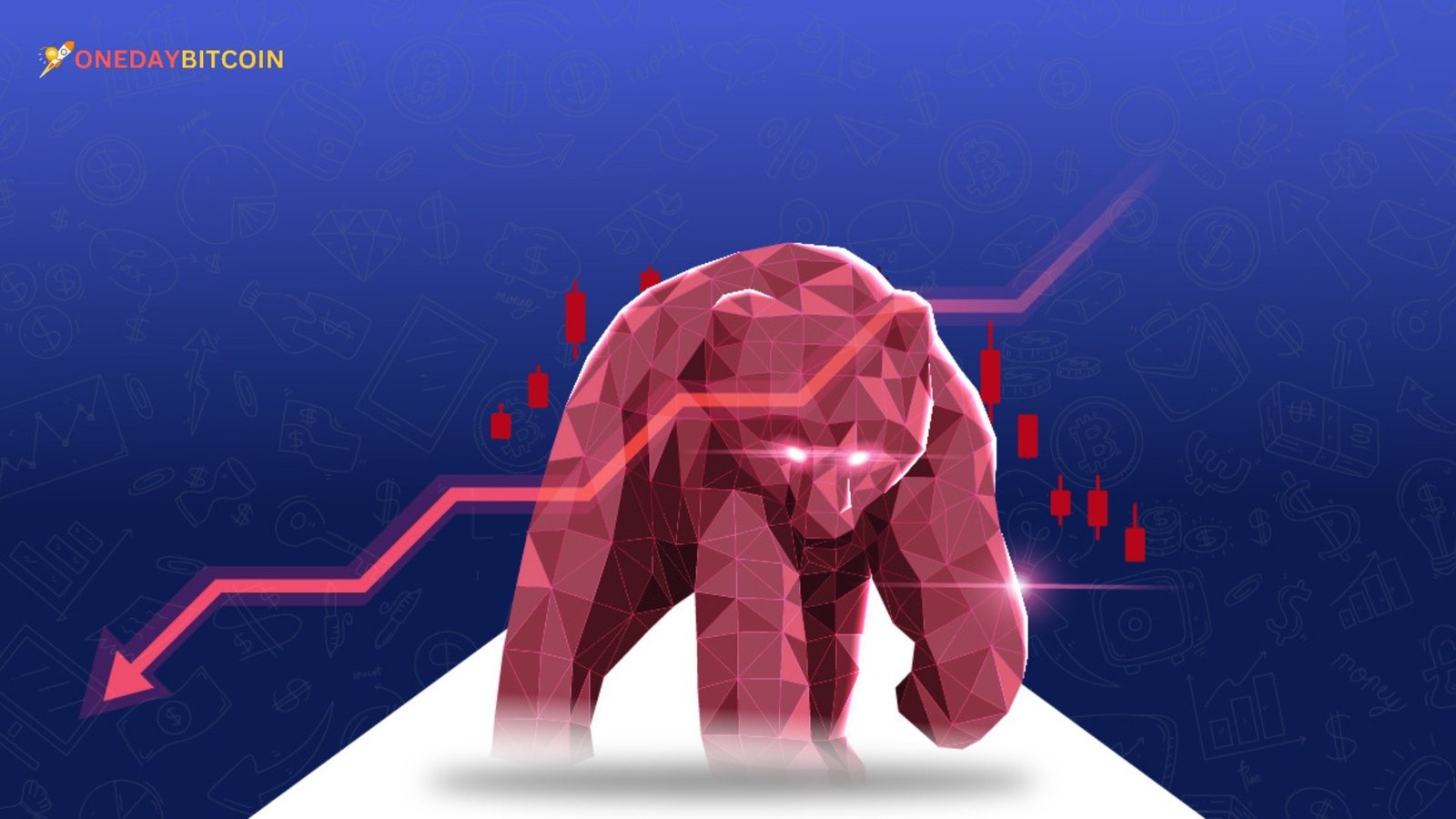Bitcoin Bear Market: The cryptocurrency market is renowned for its volatility, and Bitcoin, the flagship cryptocurrency, is no exception. The term “Bitcoin Bear” refers to a period of sustained downward price movement for Bitcoin, characterized by pessimism, fear, and declining investor confidence. As of 2024, Bitcoin is experiencing what many call a bear market, but to understand the full implications, it’s essential to delve into the factors contributing to this downturn, the historical context, and the potential future scenarios.
The Current State of the Bitcoin Market
As of mid-2024, Bitcoin has significantly declined from its all-time highs. The price, which once soared above $60,000 in late 2021, has fallen considerably, hovering around the $20,000-$25,000 range. Several factors, including macroeconomic challenges, regulatory pressures, and market sentiment, have driven this decline.
Macroeconomic Factors
The global economy has grappled with inflation, rising interest rates, and geopolitical tensions. These factors have led to a flight to safety among investors, who increasingly favour traditional assets like gold and government bonds over riskier assets like Bitcoin. The Federal Reserve and other central banks’ aggressive interest rate hikes have particularly impacted the cryptocurrency market, as higher interest rates make borrowing more expensive, reducing the liquidity that has often fueled speculative investments in Bitcoin.
Regulatory Pressures
Governments and financial regulators worldwide have been tightening their grip on cryptocurrencies. The U.S. Securities and Exchange Commission (SEC) has intensified its scrutiny of crypto exchanges and assets, leading to uncertainty and fear among investors. In addition, several countries have introduced stricter crypto trading and mining regulations, further dampening market enthusiasm. China, a significant player in the cryptocurrency market, has maintained its ban on crypto transactions, which has a ripple effect on the global market.
Market Sentiment
The sentiment in the Bitcoin market has shifted dramatically over the past year. The “fear and greed” index, a popular measure of market sentiment, has been consistently in the “fear” zone, indicating that investors are cautious and pessimistic about Bitcoin’s near-term future. This negative sentiment is self-reinforcing, as falling prices lead to more selling, further driving down the cost.
Historical Context: Bear Markets in Bitcoin
To understand the current bear market, looking at previous bear markets in Bitcoin’s history is helpful. Bitcoin has experienced several significant downturns since its inception in 2009:
- 2011-2012: One of the earliest bear markets occurred after Bitcoin’s price surged from a few cents to $32, only to crash to $2 by November 2011. The collapse of the first major Bitcoin exchange, Mt. Gox, and hacking incidents drove this 94% drop.
- 2013-2015: After reaching $1,150 in December 2013, Bitcoin entered a prolonged bear market until early 2015, with the price bottoming at around $200. This decline was primarily due to the fallout from the Mt. Gox collapse 2014, which resulted in the loss of 850,000 bitcoins.
- 2017-2018: Following the historic bull run in 2017, where Bitcoin reached nearly $20,000, the market experienced a severe correction. By December 2018, Bitcoin’s price had fallen by over 80% to around $3,200. This bear market was fueled by regulatory crackdowns, particularly in South Korea and China, and the ICO (Initial Coin Offering) bubble bursting.
- 2022-2023: More recently, the bear market of 2022 was triggered by a combination of global economic uncertainty, the collapse of major crypto projects like Terra/Luna, and the failure of several high-profile crypto exchanges. Bitcoin’s price plummeted from its 2021 high of nearly $69,000 to below $20,000 by the end of 2022.
The Current Bear Market: Unique Characteristics
While the current bear market shares similarities with past downturns, it also has unique characteristics that differentiate it from previous cycles.
Institutional Involvement
Unlike earlier bear markets, the current one has seen significant involvement from institutional investors. Major financial institutions, including hedge funds, asset managers, and publicly traded companies, have invested in Bitcoin. While this has provided some stability to the market, it has also made Bitcoin more correlated with traditional financial markets, particularly equities. As a result, Bitcoin’s price has been more sensitive to broader market downturns.
Regulatory Evolution
The regulatory landscape for Bitcoin and cryptocurrencies is evolving rapidly. In the past, regulations were either nonexistent or inconsistent across different jurisdictions. Today, governments worldwide are concerted to create a more regulated environment for cryptocurrencies. This has led to increased scrutiny of exchanges, stricter Know Your Customer (KYC) and Anti-Money Laundering (AML) requirements and a focus on investor protection. While these measures may foster long-term stability, they have contributed to short-term uncertainty and volatility.
Technological Developments
The Bitcoin network has seen significant technological advancements, including implementing the Taproot upgrade in 2021, which enhanced privacy and scalability. Additionally, the Lightning Network, a second-layer solution for faster and cheaper transactions, has grown in adoption. These developments suggest that Bitcoin’s underlying technology evolves, even as its market value fluctuates.
Future Outlook: What’s Next for Bitcoin?
Predicting Bitcoin’s future, especially in a bear market, is inherently challenging. However, several scenarios could play out in the coming months and years.
Continued Downturn
If macroeconomic conditions worsen, with further interest rate hikes and persistent inflation, Bitcoin could see further declines. Bitcoin might retest lower support levels in this scenario, potentially dipping below $20,000. The market could remain bearish until there is clear evidence of economic recovery or a shift in monetary policy.
Stabilization and Recovery
On the other hand, if the global economy stabilizes and inflation begins to cool, Bitcoin could find a bottom and begin to recover. Historically, bear markets have often been followed by periods of consolidation, where the price stabilizes before entering a new bull phase. This could happen in the latter half of 2024, especially if there is renewed interest from institutional investors or positive regulatory developments.
Long-Term Growth
Over the long term, Bitcoin’s fundamentals remain strong. The limited supply of 21 million bitcoins, combined with growing adoption as both a store of value and a medium of exchange, suggests that Bitcoin could recover and eventually surpass its previous highs. This would require a return of investor confidence, broader business acceptance, and continued cryptocurrency innovation.
Conclusion
The current Bitcoin bear market is challenging for investors, marked by significant price declines, negative sentiment, and regulatory uncertainty. However, it’s important to remember that Bitcoin has weathered numerous bear markets and has consistently emerged stronger. While the short-term outlook remains uncertain, the long-term prospects for Bitcoin continue to attract believers in the transformative potential of decentralized digital currency. As always, investors should approach the market cautiously, stay informed, and consider the risks and opportunities ahead.


